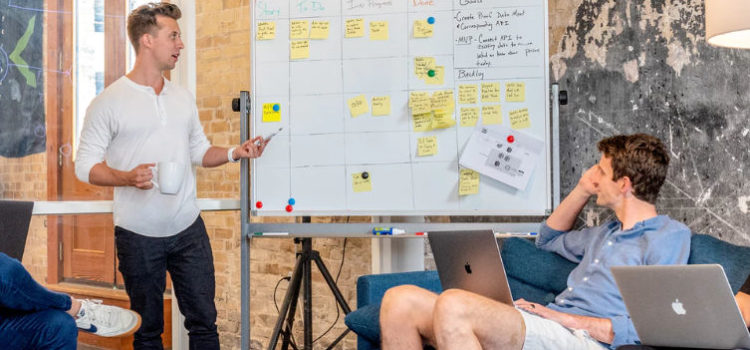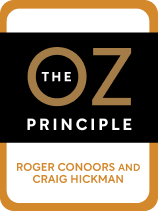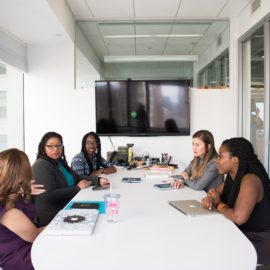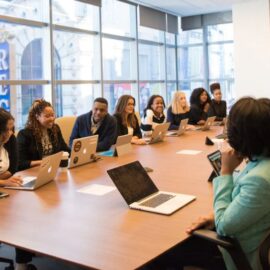

This article is an excerpt from the Shortform book guide to "The Oz Principle" by Roger Connors, Tom Smith, and Craig Hickman. Shortform has the world's best summaries and analyses of books you should be reading.
Like this article? Sign up for a free trial here .
Do you often solve problems as part of your job? Why is it important for a company to have a standard problem-solving roadmap for employees to follow?
Problem-solving is a part of everyone’s job, no matter the role. Hence, it’s important to come up with a problem-solving process and ensure every employee knows it like the back of their hand.
Here are six steps to effective problem solving in the workplace.
Problem-Solving Roadmap
Solving a problem means averting catastrophes and implementing better ways of doing things. It leaves you better off in the long run. Effective problem-solving in the workplace involves the following steps:
1. Get at the root of the issue. Don’t waste time and resources focusing on superficial aspects. (Shortform note: The tendency to focus on the least important aspects of an important task or problem is known as “bikeshedding” or “Parkinson’s Law of Triviality.” The term bikeshedding comes from an instance where a group tasked to come up with a plan for a nuclear power plant spent inordinate time designing a bike shed. To avoid this, ask yourself whether what you’re focusing on will matter in a few months or years and whether it’s easy to change. If the answers are yes, then you’re probably bikeshedding.)
2. Mean it. Don’t take shortcuts or try to appease anyone. Implement long-lasting solutions and honestly believe in them.
3. Don’t be complacent. Always look for things you can do better. This sentiment applies not only to resolving specific problems, but also to how you can approach work and life in general. Hone your existing skills and keep gaining new ones. Be aware of what other people are doing. By being more knowledgeable and well-rounded, you’re more likely to spot problems early and to be able to come up with solutions.
And if you get stuck, there are ways you can troubleshoot:
4. Try looking at the problem from a new angle. Sometimes you need a different perspective. (Shortform note: Tips for examining a problem from different perspectives include: rephrase and reframe it, challenge assumptions, expand and narrow the view, view it through the eyes of each stakeholder, pose questions rather than making statements, and use the SCAMPER tool: Substitute, Combine, Adapt, Modify, Put to other uses, Eliminate, Rearrange or Reverse.)
5. Ask for help. This might mean leaning on an existing relationship or reaching out to someone new, whether it’s a colleague or another company that may be a potential ally.
6. Stay alert. A solution might lie in a small detail that you’ve taken for granted or overlooked. Pay attention to all parts of the situation; nothing is unimportant.
Remember that if you ignore a problem, it’s likely to get worse. Like an unusual noise coming from your car’s engine or an unexplained pain in your knee, what begins as a minor irritation might grow into a serious issue if you neglect it.
| Concrete Advice for Better Problem Solving While the above advice provides a good place to start, solving tough problems may require more concrete strategies. Here are actionable tips on how to approach problem-solving: Schedule time: In Emotional Intelligence 2.0, authors Travis Bradberry and Jean Greaves recommend dedicating regular time to problem-solving as a tactic of self-management, because it’s difficult in a busy life to find time to think through decisions before making them. Schedule 15 minutes a day to walk away from your work and problem-solve particular issues. This will help you to make clearer choices and ensure that your feelings aren’t skewing your decision-making process. Accept struggle: In Ultralearning, Scott Young recommends letting yourself struggle with problems. While he’s referring to the process of learning, his advice applies to problem-solving more generally as well: Force yourself to struggle when you encounter a difficult problem or obstacle when trying to learn something. Most problems can be solved with enough thought and effort, and deliberate struggle creates deeper understanding of the problem and builds resilience, leading to more efficient problem-solving later. Encourage this by setting a timer for 10-15 minutes and pushing yourself to work on the problem at least until the timer goes off. Ask this question: FInally, in 12 Rules for Life, psychologist Jordan Peterson advises: Before blaming anyone else for a problem, you should be able to answer yes to the question, “Have I done everything within my ability to solve the problem?” |
| Analytical Versus Insightful Problem-Solving Most of us take an analytical approach to solving problems—of reasoning through them step by step. However, we can also solve problems with insight, which occurs when our mind moves from being at a loss to suddenly knowing exactly what to do, as in a “Eureka!” moment. According to researchers, insight happens when we subconsciously reformulate the problem, seeing it in a different context. Both approaches are innate, and we can use them in combination or one after the other. Further, insight is closely linked with creativity, and researchers say we can learn techniques to promote both creative thinking and insightful problem-solving, such as: Soliciting different perspectives to help us see problems in a new way.Approaching challenges with passion, which fosters creativity.Taking a break from thinking about the problem to let ideas percolate.Trying out many ideas, even outlandish ones because the best solution may come from an unexpected direction.Persisting despite wrong turns and roadblocks. Success stems from learning from experience. |
Prepare for Stormy Weather
When you’re trying to solve a problem, you’ll inevitably run into roadblocks. You might be discouraged and revert to a victim mentality. Instead, mentally brace yourself for things to get tough. Try to predict setbacks or obstacles and prepare for them.
(Shortform note: Following is a planning strategy for businesses to anticipate and prepare for problems; the same type of thinking can work for individuals too. Regularly brainstorm with your team to identify events or conditions that could upend your business. Identify early indicators of each event or condition, and determine what actions you would need to take in response, such as workarounds. Engage your up-and-coming leaders in “scenario thinking,” or imagining a range of problem scenarios and responses. Compile the scenarios and responses in a manual.)
| Overcome Obstacles by Asking Strategic Questions When confronting inevitable challenges or setbacks, self-help author Tony Robbins recommends asking yourself problem-solving questions: What’s good about this problem? This shifts your mindset from being upset about the problem to what you can learn from it. What needs improvement? This question looks for ways to solve the problem, presupposing the situation will improve. What am I willing to do to improve the situation? This question generates specific actions toward resolution. What am I willing to stop doing to improve the situation? This question identifies disempowering habits getting in the way of resolution. How can I enjoy the resolution process? After determining the problem and how to tackle it, this question encourages you to find pleasure in resolving it (which will motivate you to follow through). |

———End of Preview———
Like what you just read? Read the rest of the world's best book summary and analysis of Roger Connors, Tom Smith, and Craig Hickman's "The Oz Principle" at Shortform .
Here's what you'll find in our full The Oz Principle summary :
- Why you have more power to create change than you may realize
- How to stop thinking like a victim
- The four steps to mastering accountability






